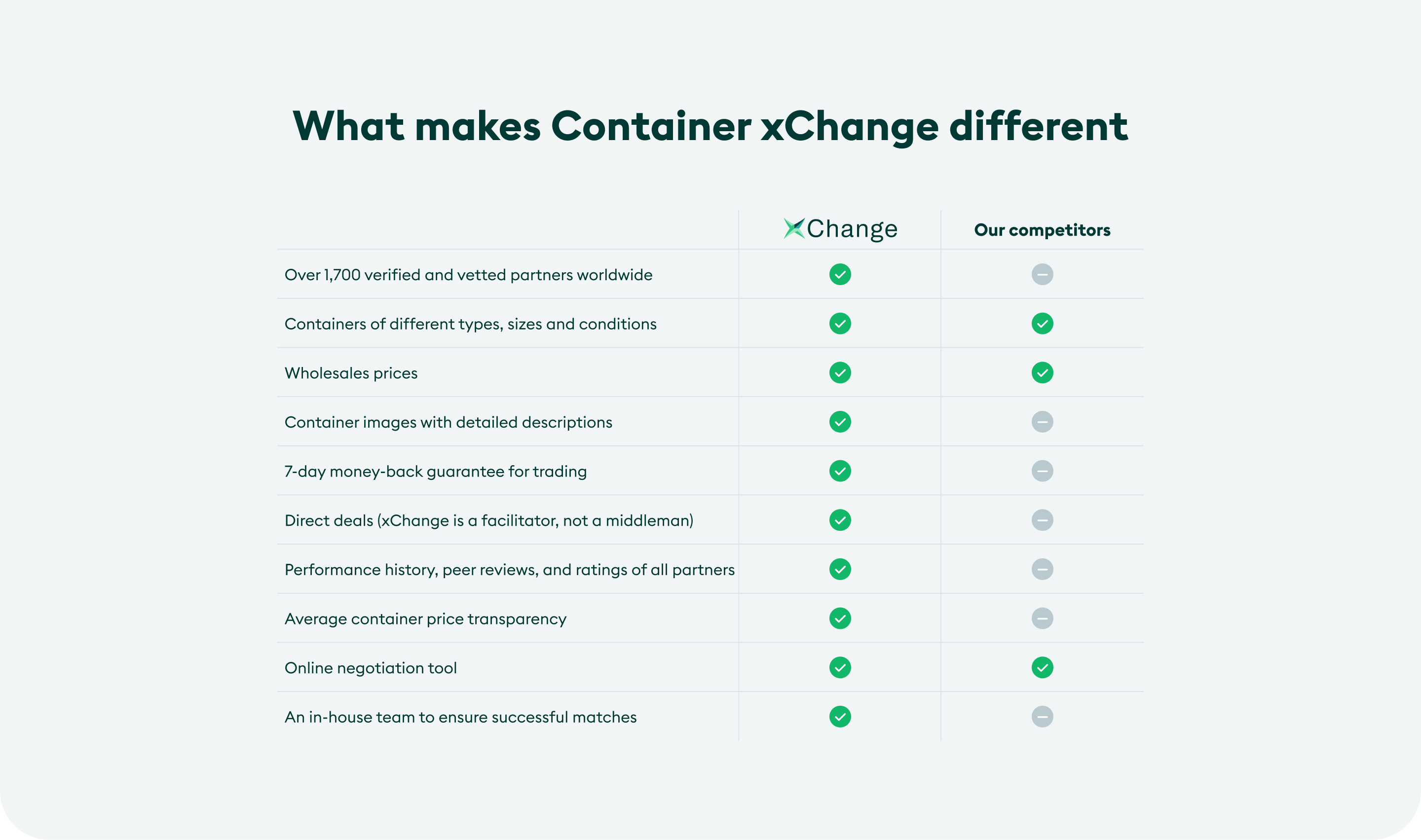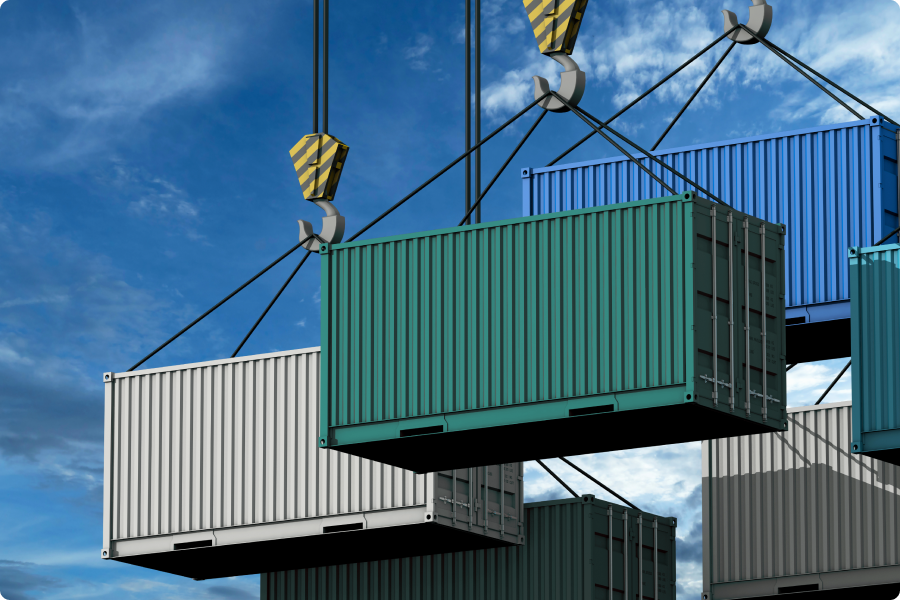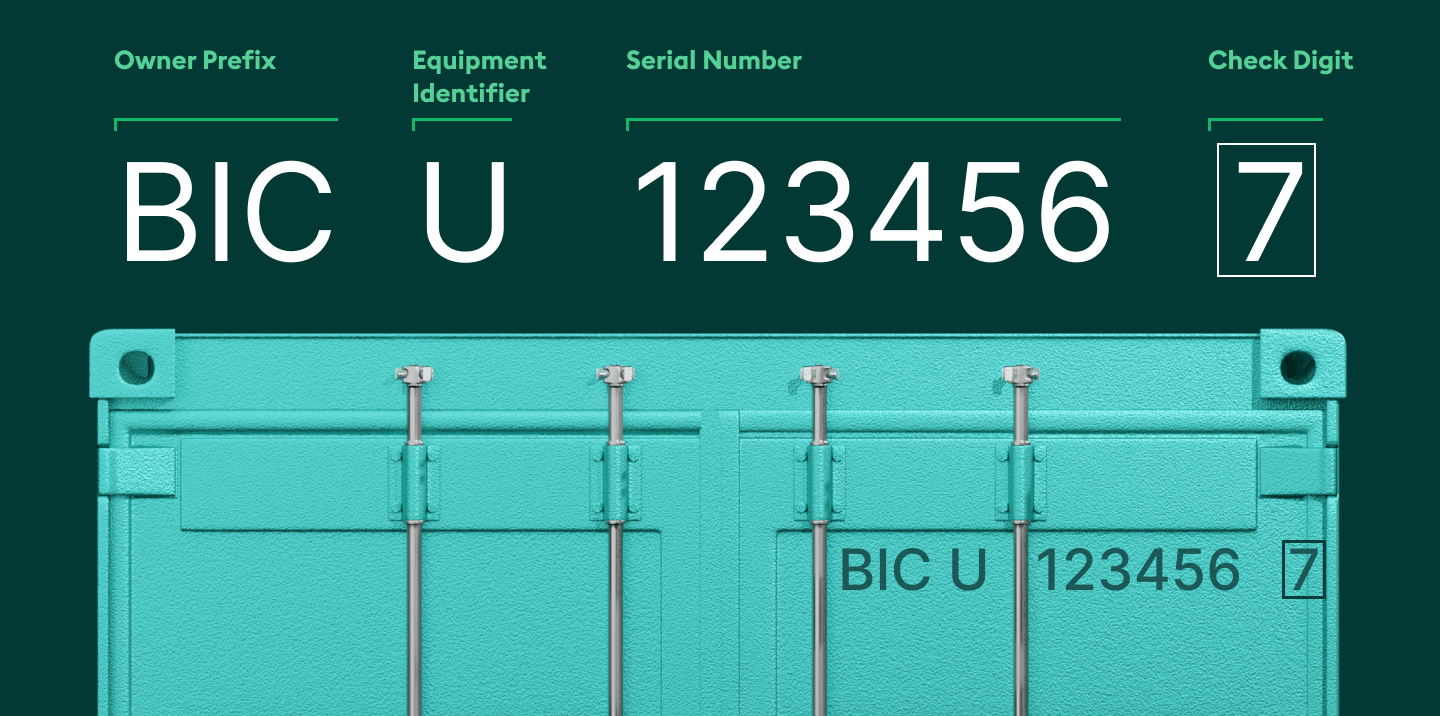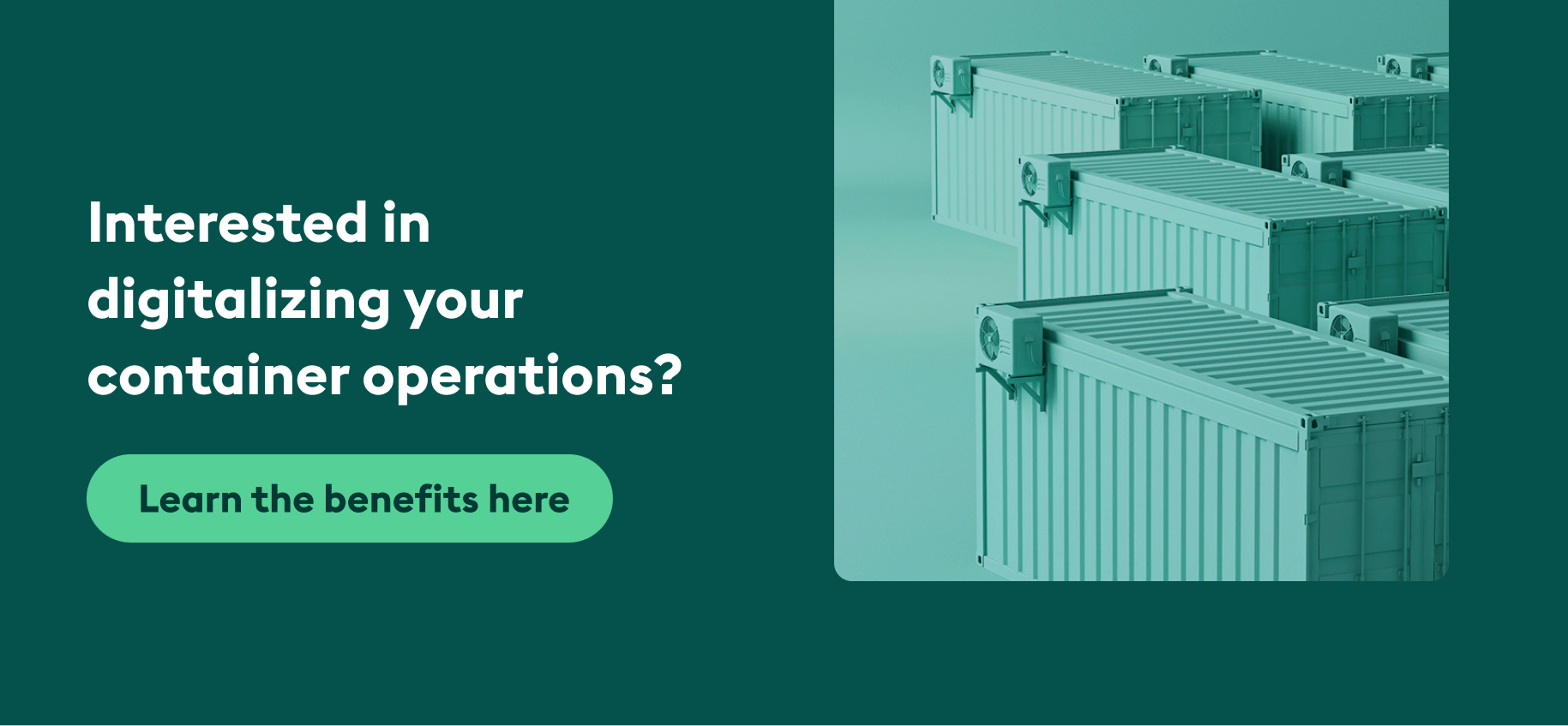Container ISO codes are important for accurate container tracking, monitoring, and compliance in international shipping. In this blog, learn how ISO codes help to streamline shipping operations, improve transparency and prevent delays.
ISO codes are unique identifiers that help logistics industry professionals manage containers throughout the supply chain process. They also ensure uniformity within the industry, which helps reduce errors and improve safety.
If container tracking and monitoring have traditionally been unreliable, slow, and inaccurate, we have a solution that will change the way you manage your operations once and for all.
With Container xChange, the largest global online container marketplace, you can buy containers at wholesale prices and track and monitor your fleet in near real–time. Finally, get regular updates and keep your customers happy. Read on to find out more.
What is a container ISO code?
An ISO code is a standard identifier for intermodal containers. The International Organization for Standardization (ISO) established these codes to ensure consistency, security, and efficiency in international shipping.
One specific standard, ISO 6346, governs the format of these container codes. Let’s learn more about this standard.
Overview of the ISO 6346 container codes
ISO 6346 standards are integral to the logistics industry, serving as the foundation of container identification.
ISO 6346 outlines the exact structure that container codes should follow, ensuring that each unit is uniquely identifiable. This global standard makes both tracking and document handling processes easier.
Why are ISO container codes important?
Container ISO codes are important for many reasons. They:
Ensure uniformity across global supply chains: ISO container codes help to create a uniform system that can be used by shipping companies, ports, customs authorities, and transport operators alike. This consistency minimizes confusion, delays, and errors in container management.
Improve efficiency and safety: ISO codes enhance operational efficiency by making it easier to locate, track, and monitor units throughout the supply chain process.
Additionally, these codes play a key role in improving safety during transportation, as they help identify container types and load capacities, minimizing the risk of overloading.
Provide regulatory compliance: Using ISO codes ensures that businesses adhere to global standards, preventing legal issues and delays.
Understanding the structure of container type codes
First off, let’s take a quick look at the role of prefixes and suffixes in container ISO codes and container numbers.
Prefixes and suffixes in ISO container codes
Prefixes: Prefixes in container codes usually include the owner code and the equipment category identifier. These elements provide essential information about the ownership and type of container.
Example prefix: ABCU
- ABC: Owner code (identifying the company that owns the container)
- U: Equipment category identifier (where ‘U’ indicates a freight container)
Suffixes: Suffixes are used for additional details about the container, such as length, height, and whether it’s a refrigerated or tank container.
Example suffix: 4560
- 4: Container length code (could represent a standard length like 40 feet)
- 5: Container height code (could represent a high cube or standard height)
- 60: Additional specifications, such as whether it’s a reefer, a tank container, or has other features
Structure of a container number
A container number is made up of the following components:
- Owner code: A three-letter prefix representing the container’s owner
- Equipment category identifier: This specifies the type of container (cargo container, reefer, etc.). Most containers use ‘U’ for freight containers, ‘J’ for detachable equipment like generator sets, and ‘Z’ for trailers and chassisWhat is a chassis? Chassis, in freight & logistics, refers to a skeleton framework with wheels on it used to move containers. It is also called intermodal chassis or container chassis. Similar to ... More
- Serial number: A unique six-digit number
- Check digit: A single-digit number used for error detection. The check digit is calculated using a specific algorithm, which ensures that any manual errors in recording container numbers can be quickly identified
ISO codes for different container types
Dry containers (ISO type 22G1, 22G0): Dry, or standard shipping containers are the most common for dry cargo, including paper, clothing, and grains.
Reefers (ISO type 45R1): Reefer containers are used for temperature-sensitive cargo such as meat, medicine, and dairy products.
Open-top containers (ISO type 22U1): Open-top containers are designed to easily load and unload oversized cargo that cannot be accommodated through the container’s doors.
Tank containers (ISO type 22T1): Tank containers are built to transport liquids and gases, including hazardous materials.
How ISO container type codes improve container tracking and logistics
ISO container type codes are crucial in improving container tracking and logistics management. They provide a standardized system that makes it easier to identify, locate, and manage shipping containers. Here are some of the ways these codes enhance logistics:
Accurate container identification: ISO codes provide a unique identifier for each container, ensuring that no two units are confused during transportation and logistics processes.
Efficient data sharing and interoperability: Standardized container codes allow all stakeholders (shippers, container owners, and port authorities) to easily share and understand container information, reducing communication errors.
Enhanced inventory management: Unique container codes help logistics players keep precise records of container availability, locations, and maintenance needs, enabling efficient inventory control.
Real-time tracking: ISO container codes help to facilitate seamless integration with digital tracking systems, allowing companies to monitor container locations and statuses in near real-time.
Improved safety and security: By accurately identifying container types and their capacity, ISO codes help prevent overloading. This in turn ensures that shipments comply with safety standards, reducing the risk of accidents.
Looking for an all-in-one solution to buy, sell, lease, or track containers, and share updates with partners and manage shipping documentsWhat are shipping documents? In shipping, shipping documents are documents that provide information about the goods being shipped. They may include information such as the origin and destination of th... More? Our team of experts can give you a personalized tour of the platform. Click below to get started today!
Now that we know how ISO codes help to improve efficiency in the shipping industry, let’s look at the benefits of using digital software for container operations.
Benefits of using digital software to manage container operations
There are endless advantages to using digital software to manage your logistics. Here are some of the top benefits:
Improved visibility
An important benefit of digital software like Container xChange is improved visibility and reduced uncertainty. You get a global overview of all of your containers, plus the ability to drill down into specific container numbers, locations, or partners when needed.
Streamlined documentation management
As an industry player, you’re aware of how overwhelming the document management process is. Digital platforms like xChange help to streamline this process by automating and storing documents such as the bill of lading for you, making document sharing quick and seamless.
Enhanced collaboration between partners
Efficient collaboration between partners is essential in the supply chain. What’s more, keeping partners and customers up-to-date and communicating with them regularly helps increase trust. Keep all of your partners in the loop by sharing ETAsWhat is estimated time of arrival? Estimated time of arrival, commonly known as ETA, is a frequently used term globally to denote the time of coming. In the shipping & logistics industry, it is ... More, alerts, and updates with them directly in just seconds.
Real-time tracking
With accurate tracking software, you can get up-to-date information about the whereabouts of your container fleet, anytime, from anywhere. With xChange Tracking, for example, you’ll receive regular container ETAsWhat is estimated time of arrival? Estimated time of arrival, commonly known as ETA, is a frequently used term globally to denote the time of coming. In the shipping & logistics industry, it is ... More as well as alerts as soon as one of your units requires your attention.
Simplify and streamline container logistics with xChange
With Container xChange, keep tabs on your entire fleet in one place, monitor your containers with ease, and keep everyone in the loop.
But it doesn’t end there. Once you subscribe to our platform, there are a whole host of other benefits you’ll enjoy:

Ready to simplify your container management and boost efficiency once and for all? With us, you can finally streamline your logistics processes and reduce your workload. Start your journey by clicking the banner below to speak to our expert team today.
Container ISO codes: Common FAQs
What is a container ISO code?
A container ISO code is a unique combination of letters and numbers, used to identify intermodal shipping containers worldwide. It is based on the ISO 6346 standard, which was created by the International Organization for Standardization.
What are ISO standards for shipping containers?
ISO standards for shipping containers include regulations governing size, type, strength, and identification of containers. Examples include ISO 6346 for identification codes, ISO 1496 for testing requirements, and ISO 668 for container dimensions.
Where do you find the ISO code on a container?
An ISO code is typically found on the outside of a shipping container, marked prominently on the side or door. It is displayed in large, clear lettering to ensure easy identification during inspections and container tracking.







